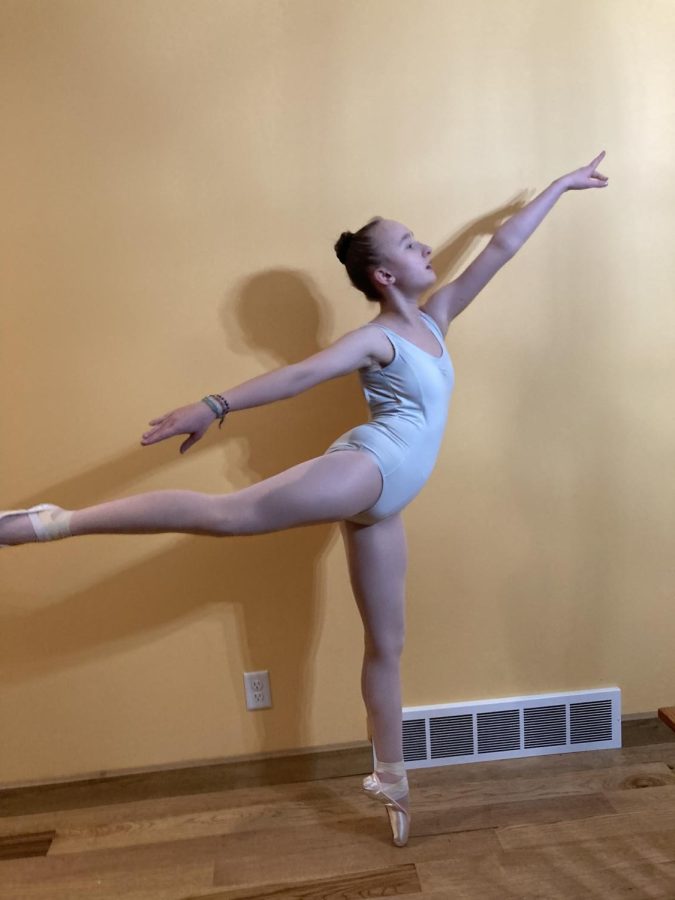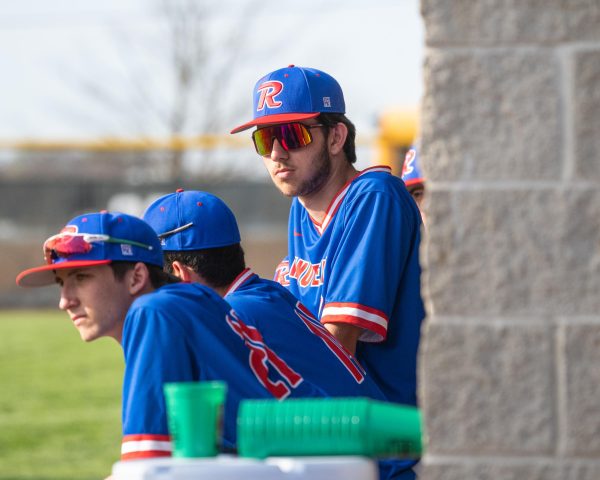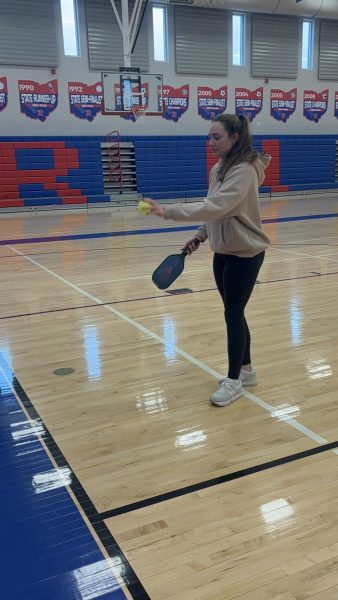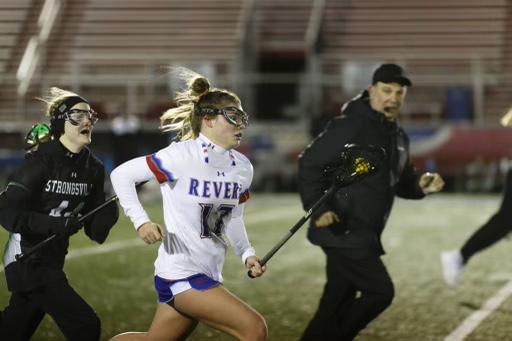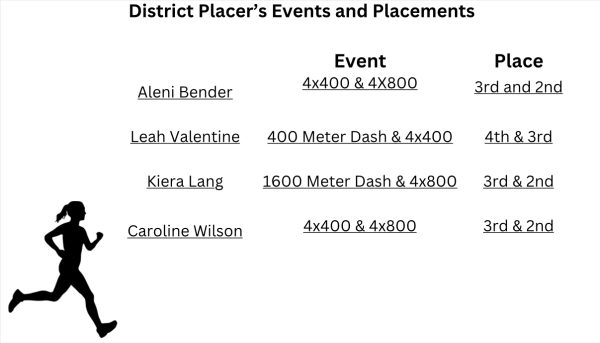Freshmen dancers find success
Fondran rehearses.
Four dancers arranged themselves into a line, then posed. Five dancers formed a line in front of them, then posed. Three dancers finally joined in front of them, posed for only a moment, and then broke the stillness with a swinging movement to the side, setting all twelve of them into motion. The wild energy in the choreography motored the calculated movements of the dancers. Each of them moved about the stage with confident awareness of themselves and their co-stars. Every step bragged the control every dancer had over their body. The performance took advantage of each square foot of the floor, moving up and down, sitting and standing, forward and backward. The Cleveland Ballet Conservatory’s class of highschool dancers was a beautiful machine, and every dancer a perfectly placed cog.
Revere dancers pour several hours a day every day into rehearsal to make this possible. There is no doubt the world of dance is demanding, but the end result is worth it. Participating in what can turn an idea and some music into a real performance is an incredible opportunity.
From a dancer’s perspective, performance day, while thrilling, is sentimental. Jessica Yi, dancer at the Dance Institute of the University of Akron and freshman at Revere High School, explained.
“Of course you’re gonna get nervous before the show and things like that, but during the performance, you feel accomplished for everything that you have put in. You’ve put in the hard work and this is the outcome. It makes you feel proud and really successful. But after the show, you feel a little bit sad, but it’s all worth it, because in the future there are even more possibilities,” Yi said.
Performing, between the pressures of success, the pride in the work one has put in, and the finality of something so important in one’s life, is an emotional experience. The work it took to get to the stage, both before and after the audition, should not be understated. Dancers train for several hours a day nearly every day in dance schools. Dancers also attend workshops all over the country. Alaina Sample, dancer at the Cleveland Ballet Conservatory and junior at Revere High School, recounted her training.
“[One would] train at a ballet school, like I am. Over the summers it’s very common to go away to another state and do dance away from where you live, over to a professional studio, for like six weeks. I’ve gone to places like Mercyhurst and Ballet West–Mercyhurst is a college that has a dance focus, and Ballet West is a professional ballet company,” Sample said.
Sample dedicates a great portion of her schedule to dance during the school year too, balancing dance, school, band, science club and international club. Many dancers struggle with time management due to the long hours dancing requires. Sample credits her success to her efforts at avoiding procrastination. She broke down her schedule.
“Right now, I practice six days a week; I usually do not do anything on Friday unless I have a special rehearsal. A professional dancer would probably dance every day of the week for the majority of the day–probably like seven hours [a day] during the weekdays because they do a lot more shows and because it’s their job, so they have a lot more time to do it. And it’s really important for professional dancers and dancers my age to take time for recuperation because it’s really hard to manage time.” Sample said.
The toll that dance takes on the body and is often underestimated by non-dancers. Until a show is over, cast member’s lives revolve around rehearsal. Dancers frequently face pressure to keep pushing themselves past their limits.
“Honestly, it’s a lot of hard work, and it takes a lot of commitment, but dancing isn’t always about having to be perfect at everything… you dance because you want to dance; because it’s your passion,” Yi said.
The sacrifices made for the sake of the performance are all worth it to the dancers, however. Sample described her passion for ballet.
“The movement is beautiful and elegant. It’s a creative outlet to express my emotions. It’s fun to learn the shapes, [to try to] master [them], or work towards mastering [them]; nobody can really master this stuff. It’s really interesting to see how I progress throughout the years I’ve been dancing, from clumsy five year old me to being able to do double pirouettes and all these crazy tricks and turns,” Sample said.
Korei Fondran, a Revere freshman who dances alongside Sample at the Cleveland Ballet Conservatory, explained their favorite kind of dance.
“Ballet is really, really old, and when it started, it was a lot of doing the impossible–floaty and very imaginative. And so eventually, people were like, ‘Okay, we need something more down to earth, we need something that we can relate to,’ and they created modern [dance]. And modern [dance] is much easier on the body… a lot of the movements are intended to forge a connection between the dancer and the audience. Contemporary is between modern and ballet… so it has things from ballet, like extensions and pirouettes, but it also takes a lot of influence from modern, so it’s a lot more grounded and a lot less structured,” Fondran said.
An example of the mindfulness contemporary dance provides is found in the Evans Somatic Dance Institute, which is a school that focuses on personal empowerment, internal awareness, and movement efficiency.
“One of the techniques we use, ‘[The Evans Method]’, is specifically based in healing. The creator was injured, and he created this technique to help himself heal,” Fondran said.
These are not the only benefits Fondran gets out of contemporary.
“A lot of dance, especially in contemporary and modern choreography, shows emotion through the movement, so it’s really good practice for body language,” Fondran said.
Many dancers dance for precisely that reason: the opportunity to physically express emotions in such an artful performance is one of the biggest draws to dance.
“Dance is a form of self-expression, and I use it to express emotions a lot. This is outside of class, just by myself, in my bedroom, with my headphones… think about it this way: you get a sad song, you feel sad, you dance sad to it. Same thing if you’re happy or angry. It’s just a really good way to deal with emotions in a safe way,” Fondran said.
Sometimes the performative aspect of dance distracts from the sport of dance. A common misconception is that dance is not a sport, which can undermine the intense physical stress dancers put themselves under.
“[Denying that dance is a sport is an insult] because if you don’t consider dance a sport, you consider it what? Probably an art form. And I think that there is a lot more overlap between art and sport than people think that there is… it’s more performance-based, but that doesn’t disqualify it from being a sport… if you consider dancing an art form but not a sport, it takes away from all the strength and flexibility and training that goes into it, and I think that it downplays how difficult dance is,” Fondran said.
A dancer’s life is busy, dance studios demanding hours of free time every day, spent strenuously working the body. But the commitment is worth it in the end for the fulfillment and mindfulness dance provides.

